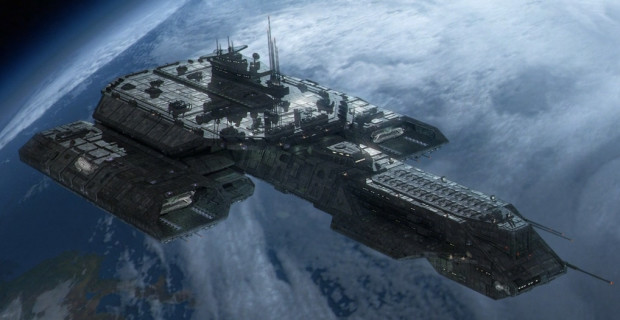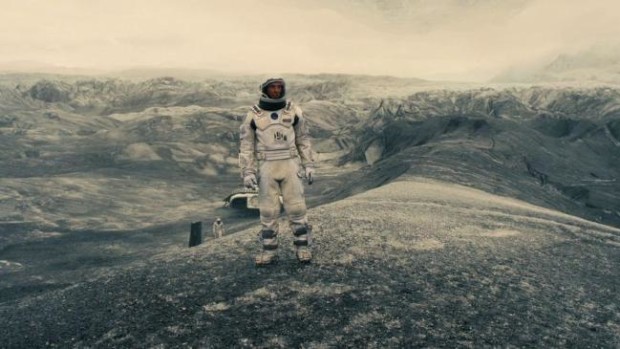Genre: Science-Fiction
Premise: After earth becomes uninhabitable, a ship is sent into deep space to look for mankind’s next planet.
About: S. Craig Zahler is back. For the holidays! I mean what says “holidays” better than the man who brought us death by hamster insertion? The Brigands of Rattleborge and They Repair Us writer hits us today with some hard sci-fi. Let’s see how juicy an S. Craig Zahler science-fiction script gets! This seems to be an early draft (it’s called “Draft A”) so take that into consideration ya little turkey thieves.
Writer: S. Craig Zahler
Details: 156 pages (c’mon, what did you expect) – “Draft A”
It only makes sense after the last couple of days at Scriptshadow that we’d want to get as far away from planet earth as possible. And who better to take us there than the Director of Description, the Pioneer of Prose, S. Craig Zahler himself.
Before I summarize the story, I want to say that the “Leave Earth To Find A New Planet” scenario is one of the oldest plots in science-fiction. We saw it with Avatar. We saw it with Interstellar. I’ve even read three amateur scripts dealing with this subject matter in the past six months.
This setup requires embracing the un-obvious. Just like a romantic comedy writer has to find new ways into a romantic comedy so that it’s not just another romantic comedy, you, as a science-fiction writer, need to find new ways into old setups like this one so they’re not just another “leave earth and find a planet” flick. And since Zahler invented the un-obvious, I’m hoping he can do just that.
The first ten pages of “Conflicts” thrusts us through 150 years on earth. Our environment is going to shit cause we’re lazy assholes, which gives rise to fringe religious groups who take advantage of peoples’ fears. Religion meets terrorism. Attacks on the rich are made. It turns out Leo was right, and it’s only a matter of time before this garbage can we call “home” is uninhabitable.
So we build Elysabeth, a self-sufficient self-intelligent ship that’s capable of putting a thousand bodies on ice while it searches the universe for habitable planets. This is one weird ship. They’ve peppered it with hundreds of HUMAN EYEBALLS that stare out into the nothingness of space while we jet-set around on our intergalactic road trip.
Eventually, after 600 years, we find a planet that, because the ship is run by a bunch of boring scientists, we name, “Option 1.” Option 1 is not ideal. While it’s got rocks and water, it also has temperatures that swing 100 degrees in a matter of minutes. Not exactly beach living. Unfortunately, Elysabeth is falling apart, so they’ve got no choice but to make Option 1 their only option.
After exploring Option 1 for a few weeks, they come across a tiny group of intelligent beings who live inside a hollow mountain. These brash beasts invite the humans to build their own village next to theirs.
Meanwhile, a few religious nuts who stowed away in the cryo-beds want to kill everyone on Elysabeth then hijack the ship back to earth, where they plan to unfreeze their cryogenically frozen children that they’ve hidden underground. Yeah, cause that sounds doable. “Hey guys, I know it’s been 1700 years. But wake up!”
All of this implies the inevitable, that mankind is probably going extinct. If it’s not the planet, it will be the aliens. And if it’s not the aliens, it will be each other. Unless, of course, our crew can pull it together. But with noted pessimist Zahler at the controls, I sincerely doubt that’s going to happen.
I don’t know what to make of “Conflicts.” Either it’s an early draft or one of Zahler’s rare misfires. Notice how in my breakdown, I didn’t mention any characters. That’s not by accident. I couldn’t find any.
We bounce around between so many people that we never identify a protagonist. And I’ll tell you right now, if there’s one choice a screenwriter can almost NEVER recover from, it’s not having a clear protagonist. Readers are desperate to identify with and see the story through someone’s eyes. If you don’t give them that, they’re confused. But more importantly – DISTANCED.
Think of a story as a mother. And you, the reader, are a baby. If you don’t have your mom carrying you around, taking you from place to place, you don’t know what the fuck to do. You sit on the sidewalk and cry.
And the basic tenets of storytelling go out the window without a main character. You don’t have an active person driving the story. Which means you don’t have a strong goal. Which means no urgency. Which means no stakes. I guess you can include these things in the abstract. The “goal” is for the crew to find a place to settle. But without that one person who we feel close to leading the charge, it’s hard to care whether they succeed or not.
It’s the exact opposite of yesterday, where Ingelsby LOCKS US IN to one character and makes her SO DAMN SYMPATHETIC that even though nothing is technically happening, we still wanted to see what she’d do next.
That’s why, if someone were to put a gun to your head and say your script could only include character development or plot, not both, I’d tell you to go with character. Because people want to connect with other people, even if they’re imaginary. Nobody wants to find the Ark of the Covenant if Indiana Jones isn’t taking them to it.
There isn’t a single character in Conflicts who’s explored with any depth besides maybe Sven, a spoiled kid in his 20s whose father was a big-shot back on earth. And yet we barely know the guy cause we’re jumping around to so many other characters.
Another issue I ran across with Conflicts was backstory. And this goes back to yesterday’s script as well. One of the first things you learn in screenwriting is to come into the story as late as possible.
In other words, if you’re writing Star Wars, you don’t start six months ago, getting to know Darth Vader during a week-long vacation on Endor. You start ten minutes after the Death Star plans have been stolen with Darth Vader chasing your thieving ass.
Ingelsby threw this rule out yesterday, leisurely taking us through Deb’s daily routine for 27 pages before her daughter went missing. Zahler takes that to another level as we traverse 800 years in 30 pages before finally discovering Option 1.
In both cases, an argument can be made that we should’ve come in later. Do we really need 27 pages to set Deb and her daughter up? Do we really need 30 pages to set up how and why we left earth? Wouldn’t it have been easier to start with the characters waking up from cryo-sleep outside their new planet?
The reality is there’s no right answers to these questions. It’s a judgment call made by the writer. If you feel like you need extra setup, include extra setup. But I will say this. In screenwriting, it’s best to err on the side of less rather than more. It’ll benefit you to come in too late rather than too early.
But if we are going to come in early, I’d argue the long setup of Deb and her daughter was way more important to its story than the long setup of leaving earth was to Conflicts.
And I’ll tell you why.
Deb’s character is DEFINED by her loss. Everything she does is based on that loss. So it makes sense to draw out the relationship that led to that loss. With Conflicts, there’s no crucial character being built up here. In fact, all we’re doing is highlighting the same thing that happens in every “leave earth for other planets” story. The earth is dying. People are fighting each other. Build a ship. Leave.
That’s a key difference that I need you guys to realize. If your backstory is something the reader could’ve assumed on their own, you don’t need to show it. And, in this case, that could’ve saved “Conflicts” 30 pages.
With that said, I know we’re talking about Zahler. He doesn’t follow screenwriting rules and is usually better for it. Indeed, some of the trippy stuff he adds to our exit (spaceships with eyeballs??) can be used as an argument for their inclusion. But it’s always a balancing act. You have to balance what you like against what’s best for the screenplay. And I don’t think a backstory that’s 95% the same as every other backstory we’ve seen in these movies was best for Conflicts.
This early draft of Conflicts needed two things – a later entry into the story and characters we actually got to know. I have a feeling that if all Zahler had to concentrate on was getting us onto this planet and having strange shit happen to our characters, he could’ve written to his strengths, which, ironically, are really weird and powerful characters encountering memorably detailed fucked-up situations.
[ ] What the hell did I just read?
[x] wasn’t for me
[ ] worth the read
[ ] impressive
[ ] genius
What I learned: One of the first things you should ask yourself when you come up with a movie idea is how late can you start your story and how soon can you get out of it? I’ll give you the perfect example. Star Wars. That movie could’ve taken place over 2-3 years. Instead, it took place over 1 week. Contrast that with, say, Revenge of The Sith. Remember how wonky that plot felt? A big reason for that is because Lucas came into the story too early and got out too late. All in all, it took place over 8 months I believe? Yikes. That’s Disaster Sauce when dealing with plots. “Conflicts” could’ve benefitted a ton form this line of thinking, at least on the front end, when we came in way too early.
P.S. I’m not saying all movies need to take place over a week. I’m merely warning you that the longer you spread your plot out, the harder your story will be to tell. I guarantee that. So get in late and get out early. Even if it means changing your planned plot. For example, I’m sure George Lucas would’ve argued, “It had to be 8 months. Queen Amidala was one month pregnant at the beginning of the movie and the ending is her giving birth.” Okay, so get creative then. Ask yourself if you can start the movie with Queen Amidala already 8 months pregnant. That’s what this line of thinking is all about.



